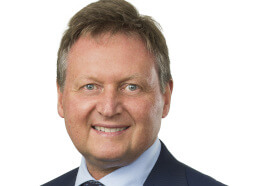Invest
How can I manage sequencing risk?
Ongoing market volatility has focused the minds of investors on sequencing risk and the potentially destructive impact it can have on their superannuation savings and retirement portfolios.
How can I manage sequencing risk?
Ongoing market volatility has focused the minds of investors on sequencing risk and the potentially destructive impact it can have on their superannuation savings and retirement portfolios.

Sequencing risk refers to the timing of investment returns and it is the risk of receiving a series of poor investment returns at the wrong time, such as when an investor is close to – or during the early years of – retirement.
Danger zone
Typically, an investment portfolio is at its largest in the five years leading up to retirement and in the five years after commencing retirement. This 10-year period is a ‘danger zone’ for sequencing risk. Investors need to take steps to mitigate the effect of sequencing risk on their retirement savings.
The destructive impact of sequencing risk was seen on the portfolios of many retirees who were unlucky enough to retire just prior to the onset of the Global Financial Crisis. While market volatility of this magnitude is not expected any time soon, significant lessons were learned during this period.
Regular contributions
For those still in the accumulation phase of superannuation, making regular contributions, rather than annual one-off contributions, is the first step to mitigating the impact of sequencing risk.
Making regular, ongoing contributions smooths out the volatility of returns. When markets fall, these contributions are used to purchase relatively cheap assets. When markets rise, less assets are being purchased, ensuring that investors do not purchase excessive amounts when prices are high.

In addition, making regular contributions to retirement savings over many years – regardless of market movements – will help investors build a large portfolio balance irrespective of investment returns. The larger the balance at retirement age, the less impact an adverse return sequence will have on the overall portfolio.
In a good year, the portfolio will benefit from the positive returns as well as the additional contributions.
A large portfolio should have enough capital committed to risky markets at all times for the portfolio to bounce back quite well when markets recover.
Those with a lesser account balance on retirement do not have the luxury of waiting out the markets and may need to sell risky assets at low prices to fund pension payments.
Bucket strategy
For those already in the drawdown phase, a strategy that involves segregating risky and secure assets into separate ‘buckets’ in the investment portfolio can be effective.
This approach means risky assets can ride out market ups and downs in their own segregated bucket for a number of years without being disturbed, regardless of market movements.
This is because the secure bucket is used to pay for cash outflows such as pension payments and fees. Retirees should consider placing at least five years of future cash outflows in the secure bucket to ensure an extended market downturn could be withstood without the risky assets needing to be sold at low prices in weak markets.
The lack of a bucket strategy option is one of the key weaknesses of many retail and industry superannuation products.
Pension amounts
Another way to protect against sequencing risk is to ensure sensible pension amounts are drawn from retirement portfolios (subject to satisfying minimum drawdown requirements). A good rule of thumb is 5 per cent a year or less of the value of the fund.
If larger amounts are drawn down, the investor runs the risk of becoming overly reliant on very good market returns each year to sustain a high-income payment. Due to sequencing risk, this can never be guaranteed.
Michael Hutton, head of wealth management, HLB Mann Judd Sydney

Property
Australia’s mortgage knife‑fight: investors, first‑home buyers and the new rules of lender competition
The mortgage market is staying hot even as rate relief remains elusive, with investors and first‑home buyers chasing scarce stock and lenders fighting for share on price, speed and digital experienceRead more

Property
Breaking Australia’s three‑property ceiling: the finance‑first playbook for scalable portfolios
Most Australian investors don’t stall at three properties because they run out of ambition — they run out of borrowing capacity. The ceiling is a finance constraint disguised as an asset problem. The ...Read more

Property
Gen Z's secret weapon: Why their homebuying spree could flip Australia's housing market
A surprising share of younger Australians are preparing to buy despite affordability headwinds. One in three Gen Z Australians intend to purchase within a few years and 32 per cent say escaping rent ...Read more

Property
Tasmania’s pet-positive pivot: What landlords, BTR operators and insurers need to do now
Tasmania will soon require landlords to allow pets unless they can prove a valid reason to refuse. This is more than a tenancy tweak; it is a structural signal that the balance of power in rental ...Read more

Property
NSW underquoting crackdown: the compliance reset creating both cost and competitive edge
NSW is moving to sharply increase penalties for misleading price guides, including fines linked to agent commissions and maximum penalties up to $110,000. Behind the headlines sits a more ...Read more

Property
ANZ’s mortgage growth, profit slump: why volume without margin won’t pay the dividends
ANZ lifted home-lending volumes, yet profits fell under the weight of regulatory and restructuring costs—an object lesson in the futility of growth that doesn’t convert to margin and productivityRead more

Property
Rate pause, busy summer: where smart capital wins in Australia’s property market
With the Reserve Bank holding rates steady, the summer selling season arrives with rare predictability. Liquidity will lift, serviceability stops getting worse, and sentiment stabilises. The ...Read more

Property
The 2026 Suburb Thesis: A case study in turning trend lists into investable strategy
A new crop of ‘suburbs to watch’ is hitting headlines, but translating shortlist hype into bottom-line results requires more than a map and a mood. This case study shows how a disciplined, data-led ...Read more

Property
Australia’s mortgage knife‑fight: investors, first‑home buyers and the new rules of lender competition
The mortgage market is staying hot even as rate relief remains elusive, with investors and first‑home buyers chasing scarce stock and lenders fighting for share on price, speed and digital experienceRead more

Property
Breaking Australia’s three‑property ceiling: the finance‑first playbook for scalable portfolios
Most Australian investors don’t stall at three properties because they run out of ambition — they run out of borrowing capacity. The ceiling is a finance constraint disguised as an asset problem. The ...Read more

Property
Gen Z's secret weapon: Why their homebuying spree could flip Australia's housing market
A surprising share of younger Australians are preparing to buy despite affordability headwinds. One in three Gen Z Australians intend to purchase within a few years and 32 per cent say escaping rent ...Read more

Property
Tasmania’s pet-positive pivot: What landlords, BTR operators and insurers need to do now
Tasmania will soon require landlords to allow pets unless they can prove a valid reason to refuse. This is more than a tenancy tweak; it is a structural signal that the balance of power in rental ...Read more

Property
NSW underquoting crackdown: the compliance reset creating both cost and competitive edge
NSW is moving to sharply increase penalties for misleading price guides, including fines linked to agent commissions and maximum penalties up to $110,000. Behind the headlines sits a more ...Read more

Property
ANZ’s mortgage growth, profit slump: why volume without margin won’t pay the dividends
ANZ lifted home-lending volumes, yet profits fell under the weight of regulatory and restructuring costs—an object lesson in the futility of growth that doesn’t convert to margin and productivityRead more

Property
Rate pause, busy summer: where smart capital wins in Australia’s property market
With the Reserve Bank holding rates steady, the summer selling season arrives with rare predictability. Liquidity will lift, serviceability stops getting worse, and sentiment stabilises. The ...Read more

Property
The 2026 Suburb Thesis: A case study in turning trend lists into investable strategy
A new crop of ‘suburbs to watch’ is hitting headlines, but translating shortlist hype into bottom-line results requires more than a map and a mood. This case study shows how a disciplined, data-led ...Read more








